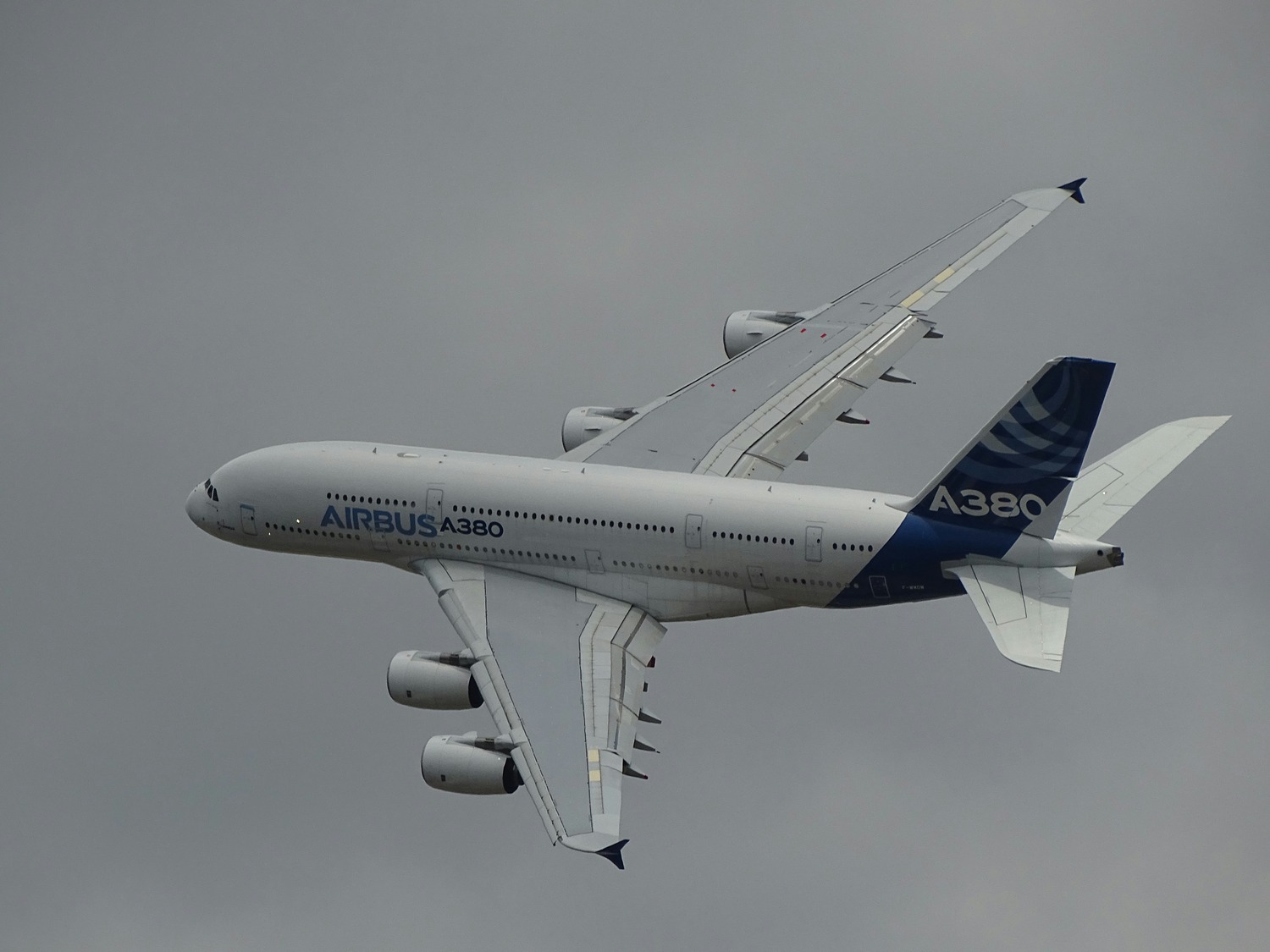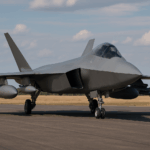The 500-seat double-deck aircraft needs more hydraulic muscle than any earlier civil type. Airbus specified a 5 000-psi architecture, a step up from the 3 000-psi standard that has dominated airline fleets since the 1950s. The leap to 5 000 psi imposed tight tolerances and scarce benchmarks, and Eaton under pressure to deliver on A380 hydraulics. Higher pressure lets engineers shrink tube diameters, actuator bores and reservoir volume. The result: lower fluid weight and slimmer system packaging without cutting power.
Eaton will supply:
- Eight Vickers-brand engine-driven pumps, each rated at 160 L min.
- Four electric motor pump packages for ground and contingency power.
- Electronic control units that supervise pressure, temperature and fault isolation.
- Quick-disconnect line fittings, filters, reservoirs and accumulators engineered for 350-bar service.
“Winning on the A380 sets a new benchmark for our civil portfolio,” said Steven K. Eisenberg, vice president of Eaton Aerospace Operations. “We now lead the industry in 5 000-psi component technology for both commercial and defense platforms.”
Allan McArtor, chairman of Airbus North America, underscored the industrial link. “Eaton shows why Airbus looks far beyond Europe when selecting partners. The A380 remains on track, and contracts with strong U.S. suppliers reinforce that momentum.”
Eaton News Highlights Global Role in Civil and Military Aerospace Sectors
Airbus launched the program in late 2000 to answer long-haul hub demand in the 450-plus-seat category. By mid-2001 the jet had attracted 67 commitments from eight airlines and leasing firms despite a cooling economy and mounting security concerns.
Firm backlog lifted further as the year closed:
- Singapore Airlines, Emirates and Air France held the earliest delivery slots.
- International Lease Finance Corporation secured options to broaden placement flexibility.
- Virgin Atlantic joined with intentions to open trans-Pacific routes.
These victories kept Airbus’ share of large aircraft orders above 60 percent in value for 2001.
Moving to 5 000 psi raises design risk, yet Airbus and Eaton see clear payoffs:
- Weight savings: smaller cylinders and pipes trim more than 1 700 kg from a fully furnished airframe.
- Efficiency: reduced fluid mass lowers pump horsepower in cruise, easing fuel burn.
- Redundancy: three independent hydraulic circuits, each with segregated lines, ensure flight-control authority after a line rupture.
This approach contrasts with programs later abandoned due to cost overruns and vulnerability risks, highlighting the A380 system’s success in managing technical challenges within budget. Eaton’s pump family uses hardened steel rotors, ceramic coatings at wear faces and vibration-isolated gearboxes tuned to the Trent 900 and GP7200 engines. Bench qualification replicates temperature swings from –54 °C to +90 °C and validates burst strength at 7 500 psi.
Eaton Aerospace Engineering Expands Role in Civil and Defense Platforms
Jackson will cast and machine pump housings under aerospace quality standard AS9100. Irvine fabricates the electronic control and protection units. Grand Rapids assembles line-replaceable modules and conducts acceptance testing. A distributed model balances labor costs and shortens logistics routes between vendors and Airbus’ final-assembly line in Toulouse.
Eaton estimates the contract will support 300 direct jobs across the three plants, plus hundreds more in its domestic supply chain. U.S. content exceeds 60 percent by value, continuing a trend of significant North American participation in Airbus programs that began with A320 wing boxes and expanded under the A330/A340 family.
Airbus plans the first A380 systems-ground-test rigs in early 2003 and the first flight in 2004. Eaton has frozen its preliminary design and will ship qualification hardware to Toulouse by mid-2002. A second-generation pump with an integrated clutch allows in-flight disconnection to suppress drag-induced accessory gearbox loads during the cruise. A dedicated team at Airbus Filton will verify dynamic responses with digital mock-ups before the hardware arrives.
Eaton Fluid Power Technology Sets Benchmark for Next-Gen Aircraft Systems
Eaton’s customer-support arm, based in Irvine, will train airline technicians on seal-replacement procedures and contamination-control practices. Remote-assist software links each maintenance base to an Eaton engineer 24/7. Spares forecasting models use Monte-Carlo simulations of valve sticking, relief-valve chatter and swash-plate wear patterns to predict demand spikes as the fleet grows.
Introducing 5 000-psi hydraulics on a civil airliner bolsters Eaton’s credibility in the “More-Electric Aircraft” trend, where electrical secondary power offsets pneumatic bleed and hydraulic loads. Lessons from the A380 feed directly into Eaton’s development work on the F-35 Joint Strike Fighter and emerging unmanned combat vehicles.
For Airbus, the choice widens its supplier base, reducing exposure to any single European hydraulics house. It also signals Airbus’ confidence that passengers will rebound from the post-September slump and that airport slot limits will still favor large aircraft on trunk routes.
Eaton reported aerospace sales of $1.7 billion in 2000. Management expects the A380 win, plus smaller awards on the Bombardier Global Express and Embraer 170, to lift top-line growth above 12 percent annually for the next three years. Capital expenditure for hydraulic test stands and clean-room upgrades will peak at $28 million in 2002 but taper once serial production stabilizes.
Private analysts at Teal Group predict an eventual installed base of 250 to 300 A380s if macro-critics who question its market size are proved wrong. Even at the low end, life-cycle spares and service could double Eaton’s original revenue estimate.
- Scott Hamilton, Leeham News: “A higher-pressure system can shave nearly one percent off operating cost on a 15-hour leg. On margins that thin, every percent counts.”
- David W. Rowe, Eaton chief engineer: “We went through five impeller revisions before cavitation margins met Airbus’ climb-descent duty cycle.”
- Pierre Rigue, Airbus EVP Engineering: “Partnering with Eaton brought fresh thinking from military programs that civil suppliers lacked.”
The award arrives while Eaton pursues a wider expansion strategy, highlighted by the acquisition of aerospace fluid-control specialist Aeroquip in 1999. Similar to ATK stepping into advanced tech with Mission Research, this move solidified Eaton’s engineering edge across civil and military domains. Industry competitors – Parker Hannifin, Moog and Goodrich – had eyed the A380 fluid-power package. Eaton’s win refocuses Parker on actuation links and keeps Moog confined to flight-control servo-valves. Observers see the contract as a bellwether for future bids on the Boeing 7E7 (now 787) and the A400M military airlifter.
The final system-definition review with Airbus occurred in December 2001. If milestones hold, Eaton will ship the first ship-set to Airbus in January 2003. Airlines will begin ground evaluation in 2005, and entry-into-service remains set for early 2006.
Eaton Aerospace Strengthens Global Support as A380 Fleet Matures – March 2025
Nearly twenty-four years later, the contract still shapes Eaton’s aerospace narrative. Production of the A380 stopped in December 2021, yet 228 aircraft remain active. Airbus maintains full-scale support, assuring operators the type will fly well into the 2040s.
Eaton, now a $30 billion power-management group, reports zero in-flight switch-over failures on its main pumps after more than 7.5 million A380 flight hours. Reliability data gathered through airline health-monitoring portals show mean time between unscheduled removals at 27 000 hours – double the initial goal set in 2001. Emirates, the largest operator, recently returned MSN 007 to service after a deep cabin refit; during the downtime Eaton technicians replaced only routine wear items.
Hydraulic service demand is shifting as airframes age. In March 2025 Eaton signed VSE Aviation as its first authorized overhaul partner for the Americas. The agreement covers A380 pumps, motor-pump packages and pressure-control valves, cutting turnaround to ten days and adding nose-to-tail rotable-pool coverage for carriers in the hemisphere.
Across the Atlantic, Air Support became Eaton’s inaugural approved service center for Europe, the Middle East and Africa earlier in the quarter. The move mirrors Airbus’ strategy to disperse aftermarket capacity as traffic patterns tilt south and carriers like Global Airlines enter the long-haul leisure segment with second-hand A380s.
Not all A380s stay in passenger guise. Several frames head for cargo-conversion studies. Eaton confirmed its pumps meet the higher cycle counts expected in freight service without design change, though it plans to introduce additive-manufactured impeller vanes in 2026 to further improve cavitation margins during high-flow door operations.
Eaton also boosted its Orchard Park, New York, site with an $18.5 million expansion to support legacy program spares, including A380 parts. The facility adds five-axis machining cells capable of holding ±5 µm tolerances on hardened steel pump stators. The upgrade increases annual capacity by 40 percent and creates seventy-seven skilled jobs.
Fleet activity rebounds after the pandemic. Global Airlines launched A380 trans-Atlantic flights on 15 May 2025, and several Asian carriers delayed planned retirements. Extra cycles mean more demand for line-replaceable units, and Eaton forecasts A380 aftermarket billings at $22 million for 2025, a rise of 18 percent year-on-year.
Looking ahead, Eaton’s Aerospace Group is adapting lessons from the A380 to lighter twin-aisle projects. Its forthcoming 6 000-psi pump family targets hydrogen-ready narrow-bodies. Still, executives point out that the A380 remains their largest single-platform revenue generator outside defense.
The original 2001 contract planted that seed. Two decades later it still pays off – for Eaton, for Airbus and for airlines that rely on a hydraulic system built to last.
REFERENCE SOURCES
- https://aviationweek.com/eaton-unveils-design-new-airbus-a380-hydraulic-system
- https://www.powermotiontech.com/hydraulics/hydraulic-pumps-motors/article/21884283/hydraulics-onboard-the-a380
- https://www.airbus.com/sites/g/files/jlcbta136/files/2021-07/eads-annual-report-2001.pdf
- https://www.airbus.com/sites/g/files/jlcbta136/files/2021-07/annual-report02-annual-review-en.pdf
- https://www.eaton.com/us/en-us/company/news-insights/news-releases.html
- https://www.eaton.com/content/dam/eaton/company/investor-relations/2001-Annual-Report.pdf
- https://www.emirates.com/media-centre/emirates-introduces-newly-retrofitted-a380s-to-manchester-and-milan
- https://www.businesswire.com/news/home/20250508694965/en/Eaton-Announces-%2418.5M-Expansion-of-Orchard-Park-New-York-Aerospace-Manufacturing-Facility
- https://www.aero-news.net/index.cfm?do=main.textpost&id=92c5ef0f-c0c5-4e6a-b835-78b760abe80a
- https://www.airbus.com/en/newsroom/stories/2025-04-happy-20th-anniversary-a380
- https://www.ainonline.com/aviation-news/air-transport/2006-12-15/a380-provides-eaton-plenty-work
- https://www.flightglobal.com/eaton-under-pressure-to-deliver-on-a380-hydraulics-/43423.article



